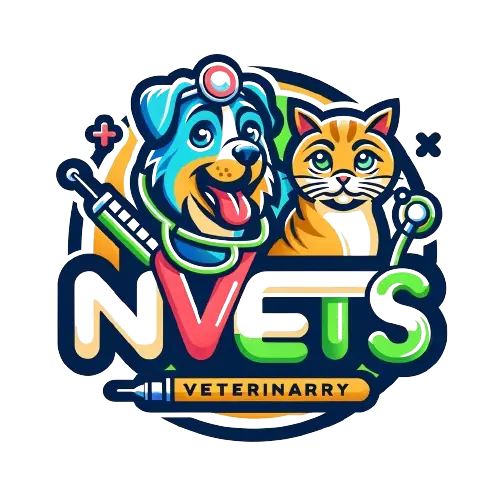Are you passionate about animals and interested in pursuing a career as a pet professional? Whether you are interested in training, behavior modification, or providing top-notch pet care, there are many paths you can take to turn your passion for animals into a career. The number of opportunities available today can make it challenging to decide where to begin.
This comprehensive guide will assist you in navigating the world of pet professionals. You’ll learn about animal behavioral techniques essential for pet professionals and how to become an expert. So, prepare to embark on an exciting journey into the realm of pet professionals by diving into this comprehensive guide.
What are Pet Professionals, and What Are the Qualifications?
Pet professionals have made a career out of working with animals. They come from different backgrounds, including veterinary medicine, animal behavior and training, pet grooming, and pet sitting. These individuals all share one thing in common: their love for animals.
Becoming a qualified pet professional requires specialized education and certification. The qualifications can vary depending on the specific field you choose to enter. For example, suppose you want to become an animal trainer or behaviorist. In that case, you may need to earn a degree in animal science or psychology before pursuing additional certifications from organizations such as the Certification Council for Professional Dog Trainers (CCPDT).
Suppose your goal is to work as a pet groomer or sitter. In that case, other avenues offer non-degree programs and certifications through organizations like the National Dog Groomers Association of America (NDGAA) or Pet Sitters International (PSI).
Ultimately, what’s most important is gaining hands-on experience working with animals; this can be accomplished by volunteering at shelters or internships with established professionals.
Becoming a qualified pet professional through education and experience in your chosen field of interest shows dedication towards helping pets live happier lives while also providing opportunities for employment within various industries dedicated to improving the lives of our furry friends!

What Types of Animal Training Exist, and How Can You Learn Them?
Animal training is a complex and diverse field that requires knowledge of various techniques and methods to achieve positive results. There are several types of animal training, including obedience training, agility training, behavior modification, and more.
Obedience training is the most common type of animal training, which teaches pets basic commands such as sit, stay, and come when called. It involves using positive reinforcement techniques like treats or toys and verbal cues to encourage good behavior in your pet.
Agility training is another popular animal training that teaches dogs how to navigate an obstacle course safely. This exercise focuses on building strength and endurance while promoting teamwork between you and your furry friend.
Behavior modification aims at correcting negative behaviors such as separation anxiety or aggression through positive reinforcement techniques like clicker training or counter-conditioning. This process requires patience from pet owners since it can take time for pets to unlearn bad habits ingrained over time.
You can learn these types of animal training by taking courses offered by certified professional trainers with experience working with animals. You can also find online resources such as articles and videos that cover a wide range of topics related to animal behavior management.
There are many ways you can learn about different types of animal training available today; however, choosing the proper method depends on individual preferences based on location availability budgets, among other considerations.
Common Challenges Encountered in Animal Training & Behavioral Modification
Animal training and behavior modification require patience, skill, and understanding. When working with animals, it’s important to remember that each is unique in personality, temperament, and learning style. As such, pet professionals encounter common challenges when conducting animal training.
One main challenge in animal training is inconsistency or lack of follow-through from the pet owner. It can be difficult for a trainer if an owner does not consistently reinforce positive behaviors outside regular sessions.
Another challenge is when animals resist specific techniques or methods used during training. This can occur due to discomfort or anxiety caused by external factors such as loud noises or unfamiliar surroundings.
Pet professionals may also encounter issues related to aggression management when dealing with dogs that exhibit aggressive behavior towards humans or other animals during work.
Behavioral modification and re-training take time and persistence. Trainers must manage the expectations of both owners and pets while providing consistent support throughout the entire process for long-term success.
The Different Types of Animal Training & Behavior Techniques
Animal training and behavior techniques are essential when dealing with pets. There are different types of animal training, but the most common ones can be classified into three categories: classical conditioning, operant conditioning, and social learning.
Classical conditioning involves creating an association between two stimuli to elicit a response. For example, ringing a bell every time you serve food to your pet will eventually make them salivate at the sound of the bell.
Operant conditioning involves using rewards or punishments to reinforce or suppress behaviors. Positive reinforcement is one type where desirable behaviors are rewarded, such as giving treats for good behavior, while negative reinforcement removes unpleasant conditions that encourage bad behavior.
Social learning relies on observing and imitating others’ actions in similar situations. This type is advantageous in teaching pets complex tasks like opening doors or retrieving items.
Clicker training animals have gained popularity over recent years due to their effectiveness in shaping desired behaviors by associating sounds from clickers with positive consequences like treats or loving words.
Positive reinforcement animal training focuses on rewarding good behaviors rather than punishing unwanted ones making it an excellent technique for managing aggressive dogs without hurting them physically.
Canine aggression management techniques involve assessing triggers that lead dogs to behave aggressively towards people or other animals, then managing those triggers through counter-conditioning methods like desensitization therapy, among different behavioral modification strategies aimed at reducing fear-based reactivity issues caused by environmental stressors such as loud noise levels around their living space environment.
Understanding animal behavior takes time and patience; however, mastering these different types of animal training & behavior techniques could help reduce bad habits and create strong bonds between pets and their owners.
How to Analyze Animal Behavior and Troubleshoot Problem Behaviors
As a pet professional, it’s essential to understand how to analyze animal behavior and troubleshoot problem behaviors. The first step in this process is identifying the root cause of the issue. This often requires observing the animal in different situations and environments.
Once you’ve identified the cause of the problem behavior, it’s time to develop a plan for addressing it. This may involve implementing specific training techniques or modifying their environment to better suit their needs.
Positive reinforcement techniques are often effective for correcting problem behaviors. For example, if an animal exhibits destructive behavior due to boredom or anxiety, providing them with puzzle toys or increasing exercise can help positively redirect their energy.
It’s also important to consider any underlying medical issues contributing to problem behaviors. Consulting with a veterinarian can help rule out any potential health concerns.
Consistency and patience are key when addressing problematic behaviors. It may take time for your training efforts to pay off, but staying committed and consistent will ultimately lead to lasting results.
The Basics of Pet Psychology to Better Understand Your Clients
As a pet professional, understanding the basics of pet psychology is essential for better serving your clients. When working with animals, it’s important to recognize that their environment and previous experiences primarily influence their behavior. By taking the time to understand these factors, you can develop effective training plans and behavioral modification techniques.
One key aspect of pet psychology is recognizing that every animal has unique needs and preferences. This means there is more than just a one-size-fits-all approach to animal training or behavior modification. Instead, you must take an individualized approach for each client based on their situation.
Another area of focus in pet psychology is understanding how positive reinforcement promotes good behavior. This technique involves rewarding an animal for displaying desirable behaviors rather than punishing them for negative ones. It’s been proven as one of the most effective methods for shaping long-term pet habits.
Additionally, recognizing body language cues in animals can help you better communicate with them during training sessions or consultations. You can accurately assess how an animal feels and respond by observing subtle changes like tail position or ear movements.
A basic understanding of pet psychology can significantly enhance your effectiveness as a pet professional and improve outcomes for your clients’ furry friends.
How to Become an Expert in Professional Animal Training
Becoming an expert in professional animal training requires dedication, hard work, and a deep understanding of animal behavior. It takes time to gain the necessary knowledge and skills to train animals properly, but it’s a fulfilling career that can benefit both animals and their owners.
Pursuing formal education or certification programs is crucial to becoming an expert. These programs teach everything from basic obedience training techniques to advanced behavioral management strategies. They also provide invaluable hands-on experience working with different types of animals.
Another essential aspect of expertise in animal training is staying up-to-date on current research and industry developments. This means attending conferences, workshops, and seminars where other professionals share new information. Learning about new methods and theories allows trainers to improve their techniques constantly.
Building relationships with fellow pet professionals such as veterinarians or trainers can enhance one’s knowledge base through shared experiences and advice exchange.
Above all else, passion for helping animals drives successful pet professionals forward in their pursuit of excellence. Staying patient while working with pets who may be experiencing challenging behaviors or conditions can be difficult but ultimately rewarding for the trainer and client.
Why Should You Consider Becoming a Certified Pet Trainer?
If you are passionate about animals and love working with them, becoming a certified pet trainer can be an excellent career choice. Here are some reasons why:
As a certified pet trainer, you will have the knowledge and skills to help pets overcome challenging behavioral problems such as aggression, anxiety, or destructive behavior. Your expertise could significantly improve the quality of life of these pets and their owners.
Secondly, being a certified pet trainer means you have undergone rigorous training programs and gained hands-on experience in animal behavior modification techniques. This sets you apart from amateur trainers who may need more professional knowledge.
Thirdly, certification gives credibility to your business or services if you plan on starting your own company. Pet owners feel reassured knowing they entrust their furry friends to someone qualified to handle any situation.
Staying up-to-date with industry developments and attending continuing education courses required for recertification shows that you’re committed to remaining knowledgeable in the field.
Investing time into gaining certification benefits you and provides peace of mind for clients when seeking professional animal training services.
As the information and advice in the “Best Pet Professional Guide” demonstrate, pet ownership involves much more than providing food and shelter. This comprehensive guide emphasizes understanding your pet’s needs as well as regular veterinary care, proper nutrition, exercise, and socialization.
A qualified pet professional, such as a veterinarian, trainer, or groomer, can ensure that your pet receives top-quality care. From choosing the right food and training techniques to preventing and treating common health issues, the information in this guide is essential for anyone who wants to provide the best care for their pet.

